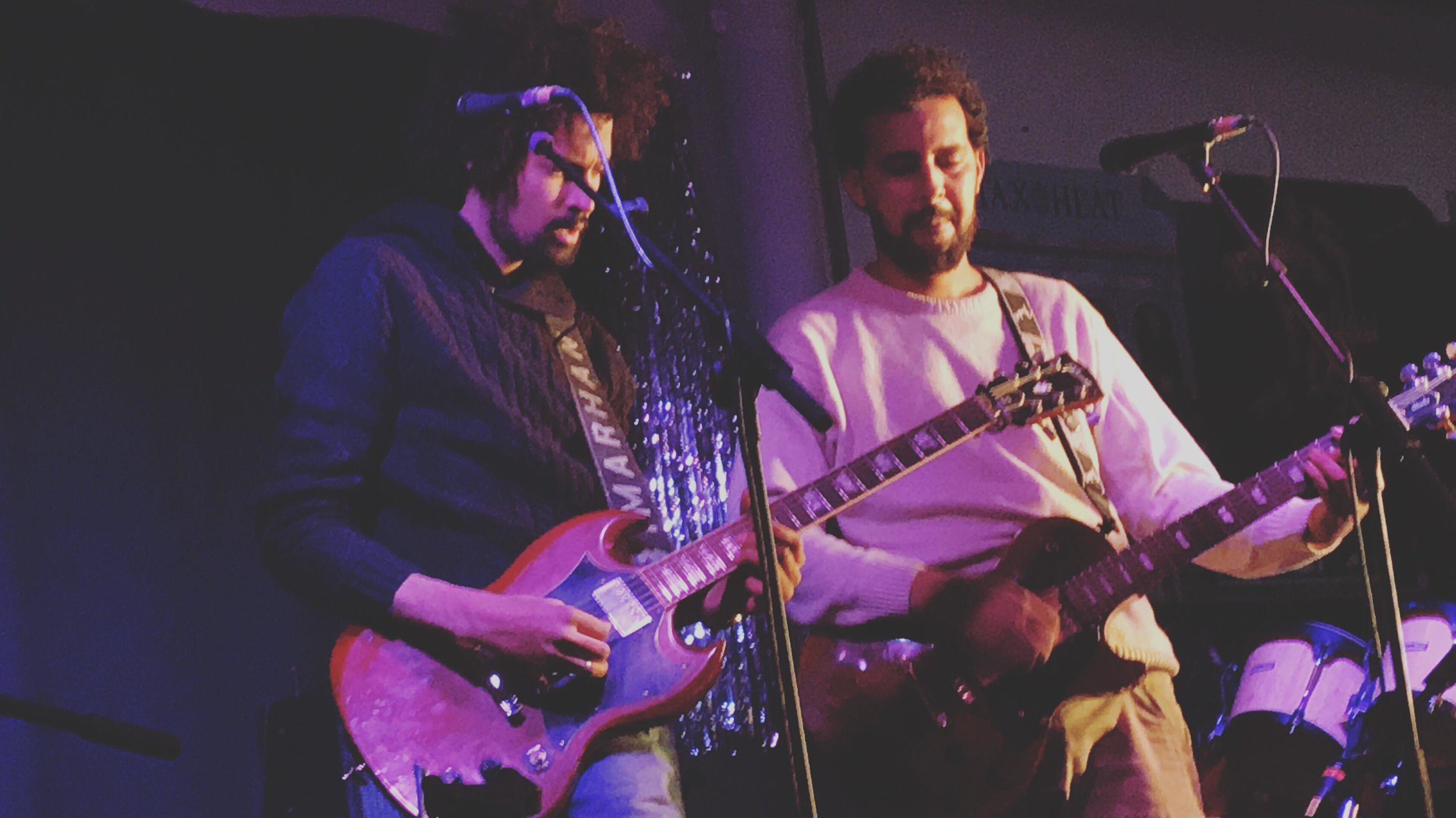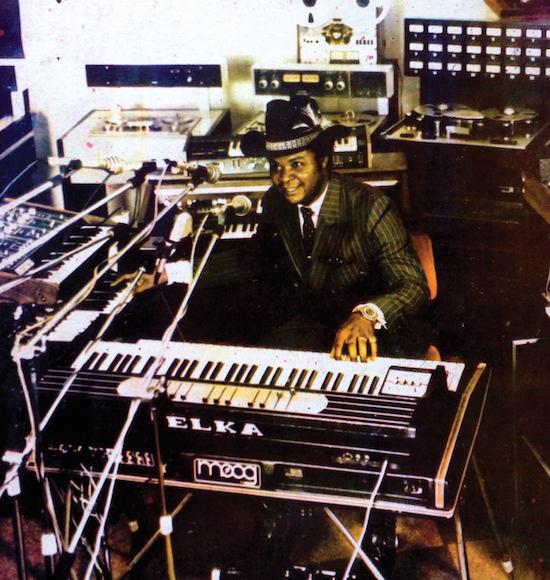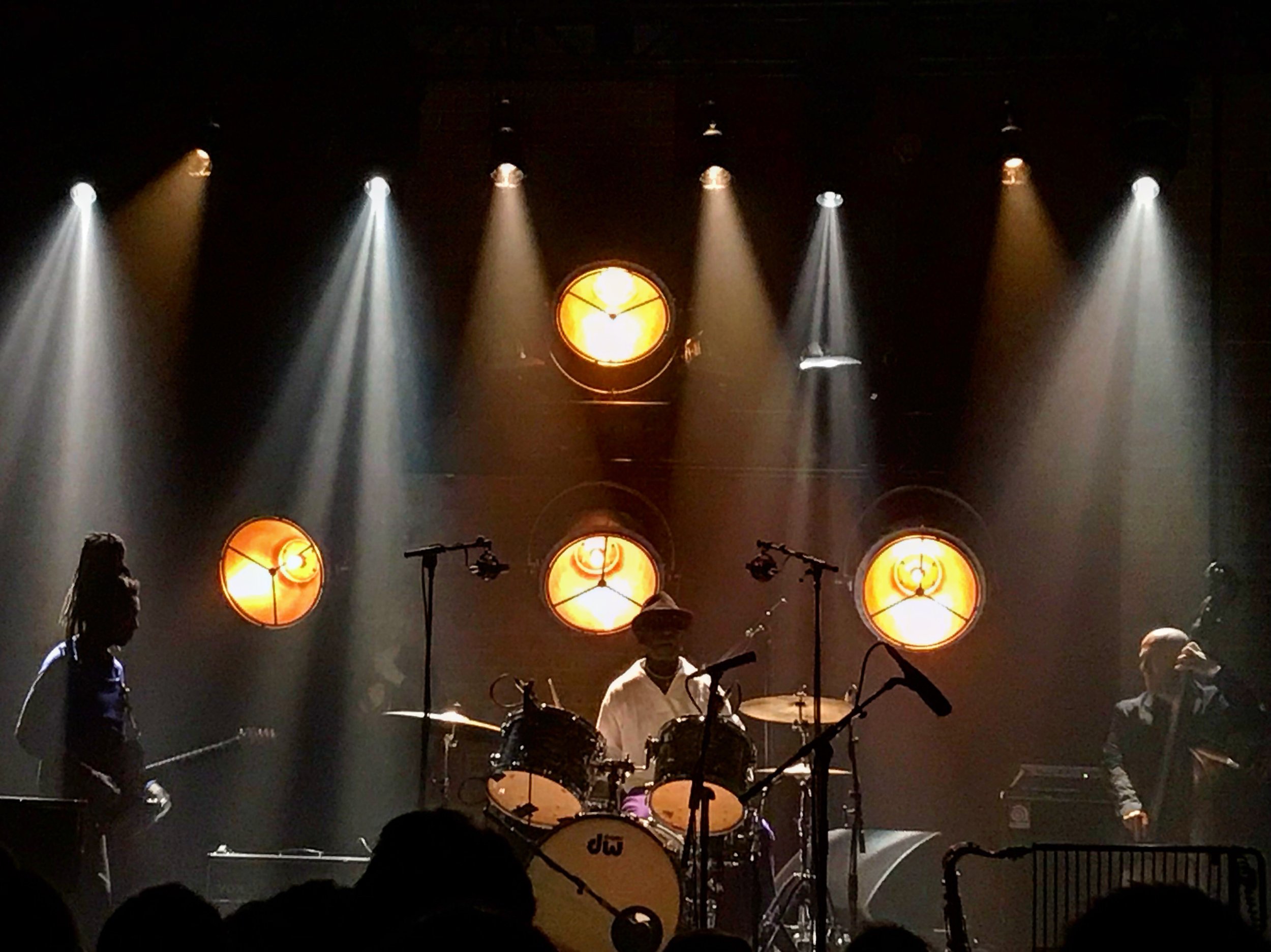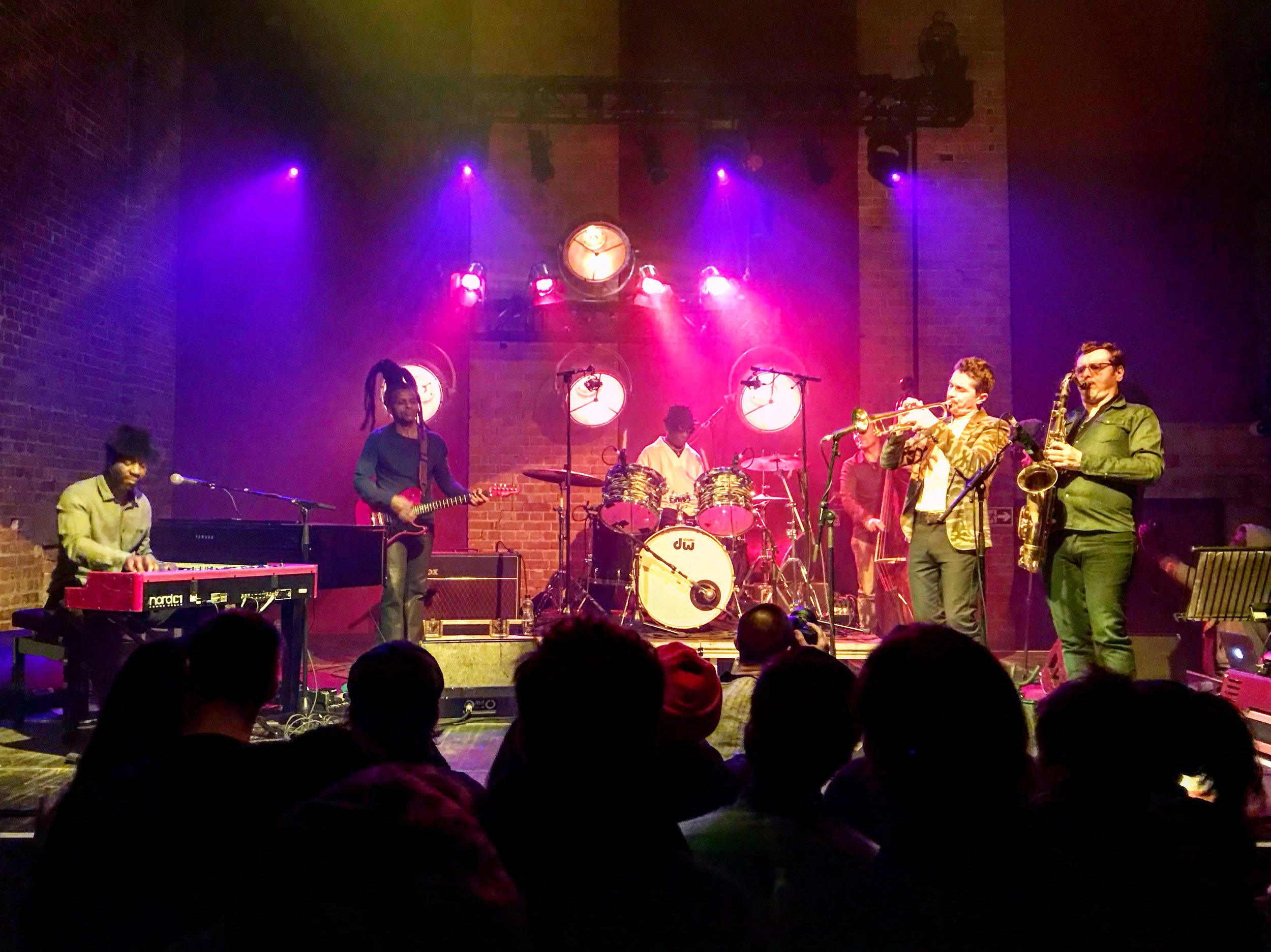14.10.18
Green Notes (Camden)
Walking into the small an intimate Green Notes venue in Camden, a wave of heat is the first thing to greet you, but second to that was a wall of incredible energy and sound bursting from the stage, that just managed to hold Seby Ntege and his four piece band.
The groove reminded me of surfing waves, although played on a kora and accompanied by Angel Motoka on vocal harmonies, Seby Ntege, a multi-instrumentalist from Uganda swaps his 22 stringed West-African lute: the kora, for a African drum: the djembe.
The stamina of the band exceeded expectation, Seby himself is one of the most jolly characters in music, with a cheeky smile and a laugh that cracks out during every moment: a contagious laugh that kept the audience in high spirits, chuckling in between each song, the guitarist Sherratt was also funny, cracking jokes and adding to the positive vibes.
During the set Seby played many instruments from his home in Uganda, including a Akogo, a type of kalimba: which is a small thumb piano. He also played a smaller version of a kora, an adungu, as well as engalabi and djembe percussion.
When playing the akogo during one song, it sounded as though it was possessed through a wah wah pedal, which I’d never heard on a thumb piano. Sebys album ‘5 Notes’ of which the concert was promoting as part of their tour: is about in London for the past 15 years, and how he misses the 5 note pentatonic music from his home town, whilst still enjoying London. In this way, I think you could feel the message of fusion between the two lands for Seby in some noticeably western musicalities, such as the wah wah on the akogo.
Seby code switched between his home languages and English, all lyrics delivered passionately and elaborately, emotions etched completely in Sebys expressions and delivery.
The songs were mostly upbeat, happy, prompting ‘whoops’ and encouraging cries from the audience at times, as well as musical clapping, singing along and even during a couple of tunes sporadic dancing erupted throughout the hole space.
The electric guitar was a treat, seeming that Sherratt had fully embodied the music Seby plays as they trill off one another cyclically in characteristic guitar styles of West Africa. Bass player Lucas also completely dissolved in the music is actually credited with producing ‘5 Notes’.
The rapport between band members was happy and fun, and thus between band and audience.
Seby brought the carnivorous tone down to do an emotional song about his mothers passing. The audience sat down to listen intently. The song was so beautiful, there were tears to be seen, I myself even found myself thinking lovingly after my own mother… promoting a shake back into reality when the song ended.
The evening with Seby and his band was notable by endless smiles and laughter, music that makes you dance and musicians that are professional and happy, all punctuated regularly by Seby’s authentic and contagious chuckling.


















